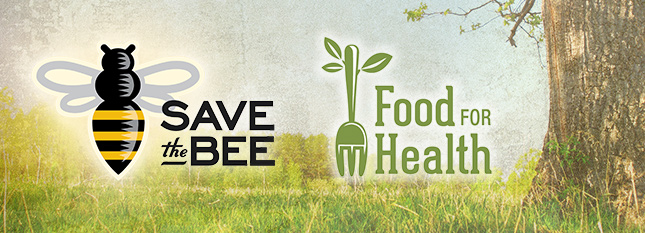Burt’s Bees Mobilizes America’s Farms for Honey Bees
Burt’s Bees, through its The Greater Good Foundation, joined forces with the Pollinator Partnership to launch the United States Bee Buffer Project. The project’s goal is to establish critical honey bee forage throughout the country, and, after participating in the White House Stakeholder Panel on pollinator health, plans to impact over 6,000 acres over the next year. The U.S. Bee Buffer Project began enrolling farms across California and North Carolina to plant bee buffers in late 2014 with an overwhelming number of applications from both states; the goal of 6,000 acres of influence was reached as soon as the application portal was opened, with calls from virtually every other state wanting to have the program as well!
The inaugural seed distribution reached 200 bee buffers across both states. The bee buffers have been planted in all types of agricultural settings; ranches, vegetable farms, orchards, tree farms, apiaries, and others.
Why plant bee buffers for honey bees? Honey bees are valuable to crops and the nation’s economy, contributing approximately $15 billion to the U.S. economy each year, they have trouble finding food – contributing to a 31.3 percent U.S. bee population decline from 2012 to 2013. Providing foraging habitat for honey bees is essential to our food systems and health. The bee buffer program is trialing 8 different honey bee forage mixes, collecting visitation data, and will be able to make science-based planting recommendations to others interested in planting bee buffers.
Beginning in June a small army of field researchers will be visiting the bee buffers to collect data about honey bee visitation and interview the participants. The goal is to understand what is working, and what can be improved for next year.
Quotes:
“Bees are the unsung heroes behind America’s agriculture. Planting a bee nectar bar on our property is our way of thanking the bees and creating sustainable beekeeping practices for Bee and Bounty Honey Co. Thanks to the support from the U.S. Bee Buffer Program we were able to sow a large habitat of native wildflowers, a much needed buffer among the hundreds of acres of vineyards surrounding our property,” said Kris Koolman, Bee & Bounty Honey Co., U.S. Bee Buffer Project participant.
“In 2012, Burt’s Bees set a 2020 Sustainability Goal to create honeybee forage sites, and impact 10,000 acres through partnerships dedicated to promoting human and honeybee health. Aided by the expertise of Pollinator Partnership, the United States Bee Buffer Project is a powerful step forward to help pollinators, while supporting agriculture in our home state and beyond,” said Paula Alexander, Burt’s Bees Director of Sustainable Business & Innovation.
“The response was simply unbelievable! We had so many applications from people wanting to plant a bee buffer, it was encouraging to know that there is a demand for this kind of project but, it was hard to turn people away. We simply didn’t have enough seed to handle the requests!” said Mary Byrne, P2 Plant Ecologist, U.S. Bee Buffer Project Manager.
Pollinator Week 2015 is right around the corner from June 15-21! What are you doing? That’s easy! Add your pollinator garden to the national SHARE map and hold a pollinator event! www.pollinator.org
GloryBee Sweetens Pollinator Week for Customers and Honey Bees
Eugene, Ore. – In support of National Pollinator Week, family-owned natural foods company, GloryBee®, is partnering with retailers throughout Oregon and Washington to engage in honey promotions highlighting the importance of honey bees as they relate to our food supply. A percentage of all honey sales, bulk and retail, goes directly towards GloryBee’s “Save the Bee” initiative.
This year’s National Pollinator Week runs June 15 – 21, and is an international celebration for the valuable ecosystem services provided by our naturally pollinating animals. For GloryBee®, bees are of special interest because as much as 1/3 of the fruits and nuts we eat is pollinated by bees. It is with this in mind that in 2012, GloryBee® launched its social program, Save the Bee, as a way to bring awareness to the issues surrounding Colony Collapse Disorder (CCD) and bring much needed funds to the research of this growing problem. In only its third year of existence, GloryBee® and Save the Bee was able to donate over $44,000 to the Oregon State University Bee Lab, who is doing tremendous work researching the issues that surround our honey bees.
“Saving honey bees who directly impact the pollination of our food supply is not something any of us should take lightly. We need everyone’s help to bring awareness to this issue as we work to direct much needed funding towards the research of CCD. The research that OSU is doing connects farmers, beekeepers, and consumers together as we all work together Save the Bee,” states RaeJean Wilson, GloryBee® Senior Executive Vice President.
During 2015 National Pollinator Week, there are 15 retail outlets committed to promoting GloryBee® honey and donating a percentage of the profits to Save the Bee. “2015 is shaping up to be a successful year for Save the Bee, and we are excited about the future as we work to save one of the most important and fascinating insects of our ecosystem,” said Alan Turanski, GloryBee® President.
To learn more about GloryBee’s Save the Bee Program, go to: www.GloryBee.com/savethebee.










